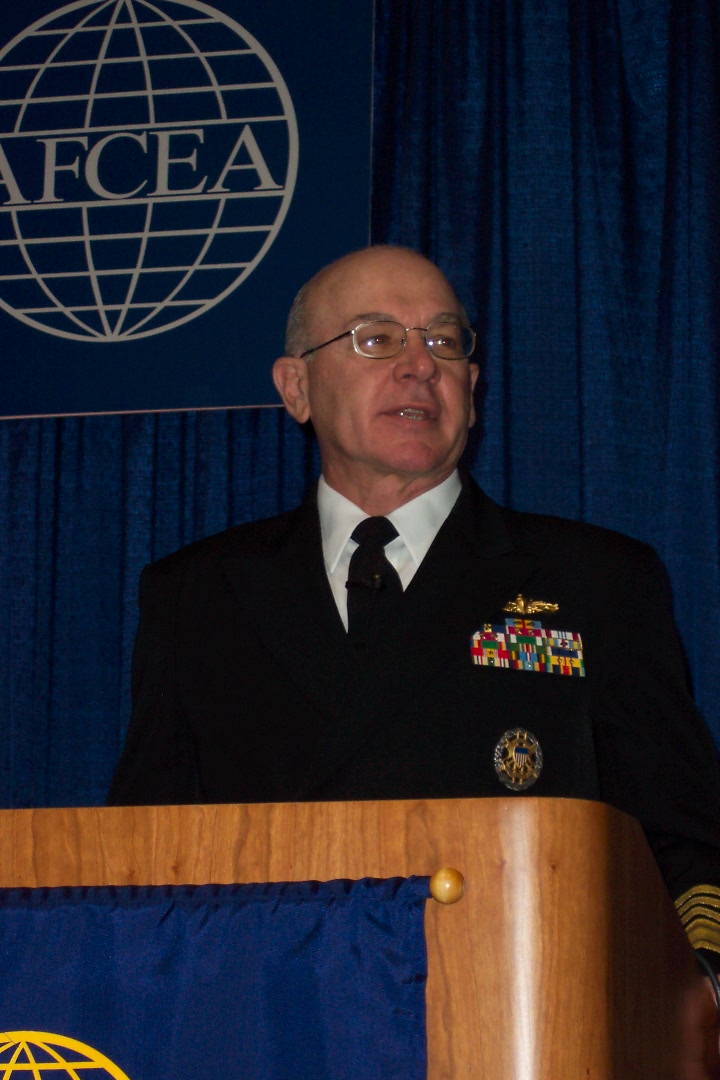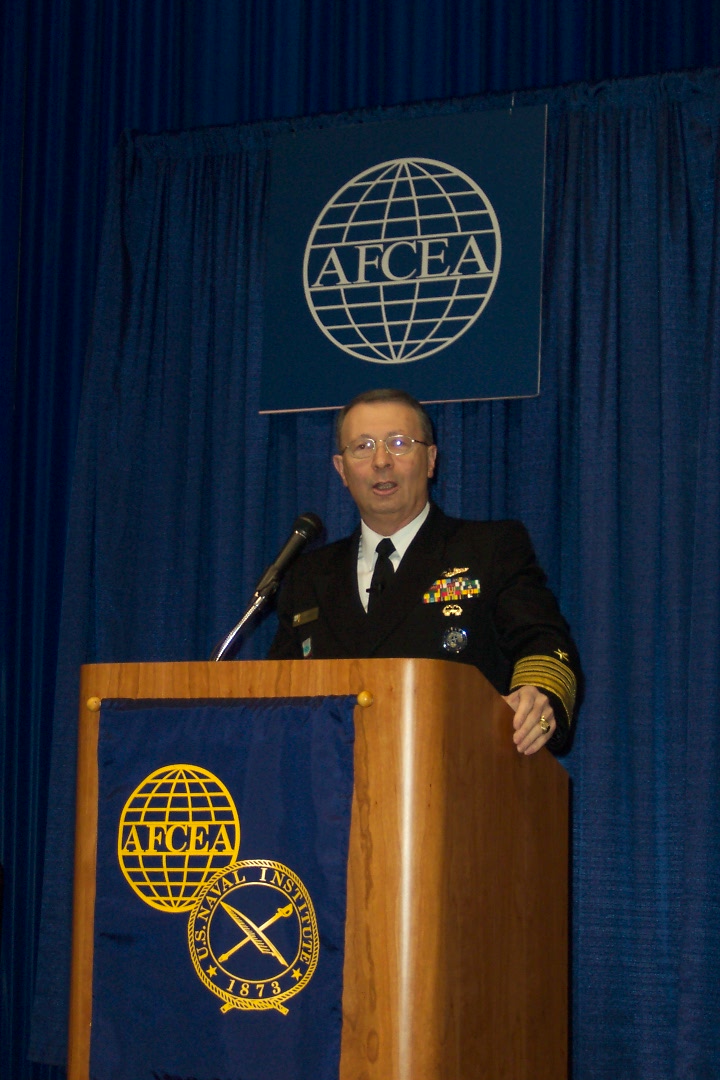Wednesday, February 4, 2004
Quote of the Day:
"Here we are in a world where Moore’s Law has technologies moving at the speed of light, but acquisition is moving at the speed of a fast-moving turtle."
—Adm. Vern Clark, USN, chief of naval operations.
 |
| Adm. Vern Clark, USN, chief of naval operations, addresses a standing-room-only luncheon on Day 2 of West 2004. |
Day 2 of West 2004, the annual conference and exposition sponsored by AFCEA International and the U.S. Naval Institute, featured a star-studded lineup of speakers and panelists.
The event theme, "Born Joint," was addressed throughout the day while attendees also crowded a busy exhibit floor. Headlining the speakers was the chief of naval operations, Adm. Vern Clark, USN. Speaking to a packed crowd at the Wednesday luncheon, the admiral emphasized the concept that the United States was the best nation in the world at waging asymmetric warfare and that innovation and technology were keys to this continued success.
The United States has technology that "can be blinding in its effect" and the people "with the genius to bring [asymmetric war success] about," he stated. The services must commit themselves to jointness by implementing a stronger and more effective joint development process, Adm. Clark declared. This must be coupled with a thrust toward bringing legacy systems into the joint realm.
"While we want our systems to be born joint, it is our responsibility to take the systems of the past and make them joint today," he stated. Addressing the Navy, Adm. Clark allowed that the future of the sea service is more entwined than ever with ground forces. Ships will be designed from the keel up to be a network. The admiral also called for the creation of a maritime equivalent of the North American Aerospace Defense Command.
The admiral continued that all the services must capture other services’ resources to maximize return on research and reduce redundancy. He listed several technologies that will be vital to future U.S. military supremacy: self-forming and self-synchronizing networks; unmanned ground, air and underwater vehicles; and improved sensors, communications and dataflow. And, industry will play a key role in enabling these breakthroughs. "We need the help of industry to create that future that must be born joint," he concluded.
The day’s other speaker, Adm. Edmund P. Giambastiani, USN, addressed the issue of jointness in the context of lessons learned and requirements. The commander of the U.S. Joint Forces Command, Adm. Giambastiani told attendees at the Wednesday breakfast that the Iraq War provided three insights into jointness: the United States does not send an individual service to war but instead deploys joint; the power of this joint force is greater than the sum of the service, interagency and ally parts; and speed of operation denies an enemy options and speeds its collapse. "Speed kills," the admiral declared.
 |
| Adm. Edmund P. Giambastiani, USN, commander, U.S. Joint Forces Command, gives Wednesday’s breakfast address. |
Rapid warfighting need not follow a plan strictly, he continued. "It’s not the plan--it’s the planning," he emphasized. The ability to adapt is a result of successful planning. In many cases in Iraq, lower-ranking officers were fully aware of changes in the commander’s intent, and this is essential for future combat.
The admiral cautioned, however, that the United States has had mixed results in turning lessons learned into practical change. He observed that "1,000 lessons is a laundry list," not the keys to harnessing command and control. One vital task is to develop a process to link concepts with the acquisition process and with lessons learned, he offered.
The first panel of day 2 asked how weapon systems can be "born joint." Moderated by Dr. Scott Truver, group vice president, national security studies, Anteon, cited the recent Aldridge study in noting that jointness is being forced into a program late in the process. Col. Leonard J. Blasiol, USMC, director, Materiel Requirements Division, Marine Corps Combat Development Command, offered that anytime a new piece of materiel is introduced into the force, it brings with it new doctrine, force structure and training. These must be joint too, he adds. Rear Adm. Thomas E. Zelibor, USN, director, Space, Information Warfare, Command and Control Division, called for a joint testing domain that would link all the service laboratories and test facilities. This would allow testers to plug in all of their boxes to determine if they "play joint." This would reap dividends in the battlespace. "It’s not plug and play; it’s plug and fight," Adm. Zelibor declared.




Comments